On April 1, 2003, Dan Brown published a novel that would take the world by storm, and ignite imaginations with the notion that Jesus could have been married to Mary Magdalene. At the time I was maintaining a site called Magdalene.org, which I’d created in 1998 as a repository for all the things I was learning about Mary Magdalene. It was a devotion of sorts, a way to document my exploration, and it led me to a community of others who were also fascinated by this enigmatic figure. Although I wasn’t convinced of its accuracy (it’s a novel, after all), Brown’s book resulted in mind-blowing opportunities for me that included meeting my religious studies academic heroes (Elaine Pagels, Susan Haskins, Deirdre Good, and Jane Schaberg among them), join them in a round-table discussion and documentary film about Mary Magdalene, and to publish my own book, The Complete Idiot’s Guide to Mary Magdalene. As I’ve explained in the years since, it’s not the book I would have chosen independently to write about her, but I was pleased to write it just the same.
Over the years I’ve spent less time thinking about Mary Magdalene, distracted by my tech career and family and various other passion projects. Several years ago I gifted the Magadalene.org domain name to Tanya Torres, whose art I find so appealing, because it was important to me that the domain lead to content that elevated Mary Magdalene’s name. Although I’d set aside the work I’d been doing to learn about her, I never truly set aside Mary Magdalene, and it seems that she apparently has not set aside me. Over the years I’ve had just frequent enough contact with others who honor her to keep the flame burning, and in January of this year a question from out of the blue about a detail in my book gave me cause to revisit all of the research I’d set aside many years ago. There was a certain comfort in rereading it, and I couldn’t help feeling the familiar enthusiasm for her mysteries rekindling.
Even so, the anniversary of Brown’s book at the beginning of this month passed me by without notice. I was busy planning a vacation to Venice, at this late stage in my life it was my first trip abroad, a new adventure with a new love. It was a coincidence that our trip fell on the Easter holiday, but a happy one; we learned that a deconsecrated church in Venice, Chiesa de la Maddalena (or simply La Maddalena), which is normally not open to visitors, would have a rare public exhibit.
On Easter eve we opened the windows in our apartment on the Rio della Tetta in Castello to listen to the bells of San Zaccaria. In the morning we started the day with a walking tour of Cannaregio, the district where La Maddalena was situated, and planned to visit before we left the area. We stopped for lunch at a small pizzeria, claiming a table outside when it became available, and chatted about our plans to find the church before too long. We were silent for a few moments as we ate, and both glanced at the stately building across the campo.
I paused, pizza in hand, when I realized it was La Maddalena. We looked at each other, surprised, and were both delighted that we should find it this way: entirely by chance, in a slowly dawning wordless realization. It was a lovely church in a neoclassical style, with a surprise over the door.

The Eye of Providence within a triangle and a circle, above the motto from Proverbs 9:1, wisdom has built her house. Not exactly the kind of religious imagery we’re accustomed to seeing on a church. Not unheard of, but not common.
As it turns out, La Maddalena is built on a site that was owned by a Templar family, where a church has stood since the 13th century. At the end of a war between Venice and Genoa in the 14th century a holiday was established in Venice for Mary Magdalene, and the church was rebuilt in her honor. In the early 18th century it was restored and a campanile (bell tower) was built, but the church was then completely rebuilt in 1780 by Freemason Tommaso Temanza. In the early 19th century it lost its status as a church (for reasons I’ve not yet discovered), and became an oratory. Today it is owned by the municipality of San Marcuola and is apparently only open to visitors during special exhibitions.
I’ve read that the interior is a dodecagonal layout, but it appeared hexagonal to my eyes, with twelve pillars, each bearing a plaque with an equal-armed cross. The exhibit of the Passion narrative that permitted visitors into the building was composed, unfortunately, of tall black cardboard walls fitted with dioramas documenting the events leading to Easter, and it obscured much of the interior as well as the art. Photographs, a sign said, were permitted of the exhibit only, NOT the interior of the building.



Why?
I don’t know the answer. I snapped some hurried “photos of the exhibit” and walked away from the building with far more questions than when I’d entered. Only one of them was about photography.
Anyone who remembers me from my Mary Magdalene work will know that while I was certainly fascinated with all of the ideas circulating about her relationship with Jesus, I was not in favor of the idea that they were married, nor anything to do with a royal bloodline. I was never convinced that she was the literal Holy Grail, as interesting as the idea was. The Da Vinci Code, for all of the opportunities it afforded me, was a bit of an annoyance; the non-fiction that underpinned it was supposition build on supposition built on supposition. What captivated me was not so much who she was, because I doubted we could ever truly know, as much as what people believed about her, then and for the prior two millennia. But this Easter, as I stood looking at the Eye of Providence hanging over the door of a church designed by a Freemason (whose remains are interred there), built on Templar ground, I suddenly wondered whether I’d given these ideas the consideration they were due.
The day before Easter I’d visited San Pietro de Castello, with its tilting campanile, knowing that in the 12th century the Holy Grail was rumored to have lived there in the throne of St. Peter. I’d seen Templar cross markers dotting the city and suddenly the abstract became much less so. There were real people who had lived and loved and worshipped and fought and died, there, in that city, whose devotion to Mary Magdalene was far deeper than I’ll ever understand. It was sobering, and there is a reverence I feel now that I never had before.
After returning home I revisited my research once again. At the time that I stopped working on Mary Magdalene topics, I had been deeply interested in the early Syriac traditions that replaced Mary Magdalene as the first witness of the resurrection with his mother, Mary of Nazareth. I’d read a number of books and articles on the ambiguity of the identity of the “Gnostic Mary,” the Mary mentioned in the Gospel of Mary and other texts, and was sufficiently impressed by the fact that it was far from settled. Of the countless theories about Mary Magdalene’s identity and the source of her epithet, none was satisfying. There were still too many things left unaddressed. In the last two weeks I’ve reread those books and articles to refresh my memory, and have been sitting patiently with the discomfort of not knowing. Eventually the discomfort gave way to fresh curiosity; my interest has been renewed, my perspective restored. What started out as the post-vacation question “who was Mary Magdalene to the Knights Templar?” has grown again into “who was Mary Magdalene?” and my favorite variant, “who was she believed to be?”

When I learn, when I think, I’m compelled to write. It’s how I sift through ideas and how I metabolize new information. I’ve made a couple of attempts to revive my previous Mary Magdalene blog in the past, but I think this time I’d like instead to start with a clean slate. This morning, as I washed dishes, I pondered the noli me tangere scene in John, in which Mary turns to Jesus, not once but twice. It reminded me that the concept of metanoia has always resonated with me, in the abstract. While I know that, theologically, metanoia has flavor of repentance to it, I’ve always associated it more with conversion and an intuitive sense of turning toward something. This feels consistent with a desire for a fresh page, as it were, uncluttered by old posts and unburdened by old baggage. I don’t know what I will post here yet. I don’t know where this journey will lead me now any more than I did in 1998, but I feel an uncharacteristic sense of peace with stepping onto the path again.
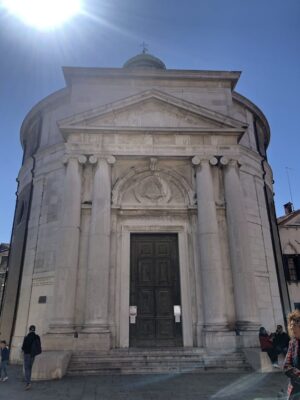
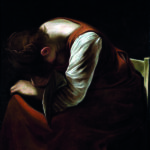
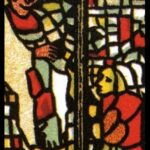
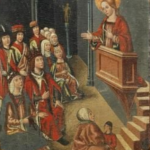
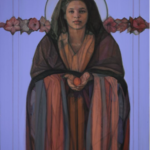
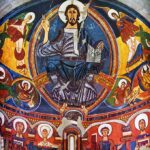
4 responses to “Reflections on the 20th anniversary of The Da Vinci Code”
Love this! I can’t see what you learn and how your thinking evolves.
Thanks for coming with me on the journey, Vicki!
Welcome back Lesa! Looking forward to hearing your thoughts and challenges as you take a new path and see Mary Magdalene from a fresh perspective.
Thanks Diana! I would love to reconnect sometime soon if you’re interested!